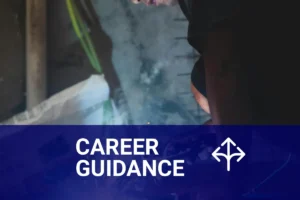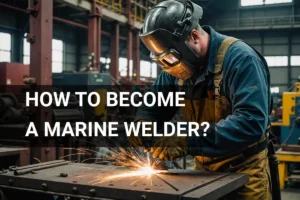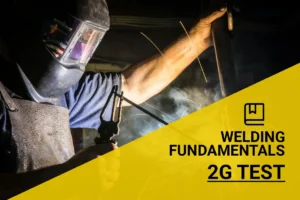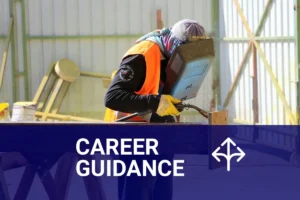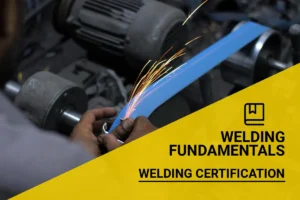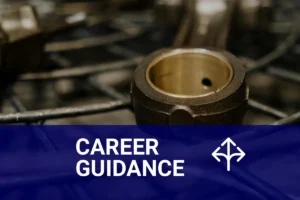How to Become an Aerospace Welder? Explore Steps, Skills, and Safety
Published on: April 27, 2025 | Last modified: March 4, 2025
By: Joe Carter
I regularly get inquiries regarding how to become an aerospace welder, and it’s a great question. It’s important to follow the right steps because this field is precise and demanding. I’ve seen firsthand how sticking to the process can pave a successful career.
In this article, I’ll cover what an aerospace welder is, types of aerospace welders, steps to become one, various aerospace welding processes, factors that influence skills, common issues and troubleshooting, plus aftercare and advanced tips for aerospace welding. We’ll also discuss the benefits of this career and explore where aerospace welding is commonly used. You’re going to learn valuable information that can help you determine how much does an aerospace welder make or the routes you can take to get into aerospace welding.
Contents
- How to Become an Aerospace Welder?
- What is an Aerospace Welder?
- Types Of Aerospace Welders
- Steps to Become an Aerospace Welder
- Types Of Aerospace Welding Processes
- Factors Influencing Aerospace Welder Skills
- Common Issues and Troubleshooting
- Aftercare, Inspection, and Advanced Tips for Aerospace Welding
- Career Advancement as an Aerospace Welder
- Why This is Worth It: Advantages
- Where is Aerospace Welding Used?
- Other Options You Can Consider
- Frequently Asked Questions (FAQs)
- References
How to Become an Aerospace Welder?
An aerospace welder specializes in joining metal parts for aircraft and spacecraft. To become one, you’ll need training, often requiring a high school diploma and welding certification. The average salary is $50,000-$70,000 yearly, depending on expertise. It’s a challenging field with critical applications.
What is an Aerospace Welder?
An aerospace welder is a skilled tradesperson who specializes in joining materials used in aircraft, spacecraft, and other aeronautical structures. These welders work with metals like aluminum, titanium, and steel. On average, they handle welding thicknesses from 0.5 mm to over 25 mm (0.02 In to 1 in). Precision is crucial; even a small error can lead to catastrophic results, so they often meet strict industry standards, such as those set by the AWS (American Welding Society).
So, how do you become an aerospace welder? It requires specialized training and relevant certifications. I remember taking welding courses and learning essential techniques like TIG (Tungsten Inert Gas) welding. Each session sharpened my skills and boosted my confidence.
This training proved helpful when I had to fix an aircraft component under tight deadlines. Knowing how much aerospace welders earn makes it worthwhile; average salaries range from $60,000 to $80,000 annually in the USA. Plus, the opportunity to contribute to cutting-edge technologies, like NASA projects, makes this career path exciting!
Types Of Aerospace Welders
What are the best welders for aerospace work?
-
Gas Tungsten Arc Welders
Gas tungsten arc welding (GTAW) is vital for critical joints and uses a non-consumable tungsten electrode. To start in this field, get trained in GTAW techniques and pass required certifications, like AWS D1.2 for aluminum. Enroll in a welding program with hands-on practice using GTAW tools like the Miller Maxstar 210. Mastery of various welding positions, including welding uphill, is essential for comprehensive skill development in this craft.
-
Metal Inert Gas Welders
Metal inert gas (MIG) welding is popular for its speed and versatility, using a continuous wire feed. To excel as a MIG welder, focus on industry-specific training and obtain certifications, such as AWS D15.1 for rail or aerospace applications. Practice setups on machines like the Lincoln Electric Power MIG 210 to master this skill. It’s crucial to be aware of the potential health risks associated with welding, such as welding-related cancer risks.
-
Shielded Metal Arc Welders
Shielded metal arc welding (SMAW), or stick welding, is known for its reliability in tough (Rough) conditions. To pursue this, take courses that emphasize safety and proper electrode usage, then earn certifications tailored for aerospace welding. Consistently practice with various electrode types and thicknesses to improve your skills.
-
Flux-cored Arc Welders
Flux-cored arc welding (FCAW) combines the benefits of MIG and SMAW, using tubular wire filled with flux. To become skilled, get training for both gas-shielded and self-shielded methods, and obtain relevant certifications like AWS D1.1. Refine your technique by setting up for different positions and settings.
-
Resistance Welders
Resistance welding uses heat generated by electric resistance to join materials, making it ideal for thin sheets. Complete specialized training and gain certifications focusing on this high-speed process. To excel, familiarize yourself with machines like the Miller R75 and troubleshoot welds to ensure quality.
That covers the different kinds of aerospace welders.
Steps to Become an Aerospace Welder
Now, we’ll cover the steps to master aerospace welding and land a great job.
-
Obtain Relevant Education
Start by completing a high school diploma or GED. Many community colleges offer welding programs that typically take one to two years. Find a program focused on aerospace welding—it’s essential for your career! Seek classes with hands-on experience, as 90% of your work will involve practical skills.
Courses often cover MIG, TIG, and sometimes advanced welding methods. Adding certifications like AWS (American Welding Society) to your resume can make a significant difference. Many successful welders I know had employers prioritize the AWS certification for hiring.
-
Gain Hands-on Experience
Intent matters here. Find apprenticeships or internships with aerospace companies. Aim for at least 2,000 hours of real-world experience, which could take about a year. This exposure prepares you for job challenges and gives you a competitive edge. Look for programs that let you work alongside experienced welders. They can share trade secrets and provide valuable feedback. Skills matter; the more you practice, the better you get! Proper grounding techniques ensure safety in welding practices, and you can learn reliable methods on how to ground a welder.
-
Specialize in Aerospace Welding Techniques
Focus on learning specialized techniques like TIG welding for aluminum or stainless steel. These methods are crucial, as 70% of all aerospace components use these materials. Concentrating on mastering these techniques will enhance your application profile.
Getting comfortable with unique setups, like working in confined spaces, can also set you apart. Many welding shops perform specialized aerospace tasks that require this knowledge. Remember, complexity knows no bounds, so embrace every challenge!
-
Get Certified in Aerospace Welding
Certifications are key in this industry. Aim for credentials from the AWS or other recognized bodies, focusing on aerospace welding. Certification levels vary, and you might want to aim for an AWS CWI (Certified Welding Inspector) designation, which generally requires at least 3 years of field experience. Completing these courses significantly enhances your employability. In fact, certified welders can earn upwards of $30/hour, positively impacting your aerospace welder salary. Don’t skip this critical step—it can be a game changer!
Additionally, understanding the potential health effects associated with welding is crucial, as exposure can lead to various eye-related risks and issues.
-
Apply for Aerospace Welding Positions
Start sending out polished resumes to aerospace companies. Networking is often overlooked; attend job fairs and reach out to industry employees. Platforms like LinkedIn can help you connect with hiring managers who appreciate personal connections.
Tailor your application to highlight relevant skills and experiences. Emphasize specialized training and any certifications. Many companies focus their hiring on those with a proven track record and applied knowledge.
That covers the steps to become an aerospace welder. Let’s now take a look at the types of aerospace welding processes.
Types Of Aerospace Welding Processes
Let’s examine the main types of aerospace welding processes: Gas Tungsten Arc Welding, Metal Inert Gas Welding, Electron Beam Welding, Laser Welding, and Friction Stir Welding.
-
Gas Tungsten Arc Welding (GTAW)
GTAW, or TIG welding, uses a non-consumable tungsten electrode. It’s excellent for thin materials, offering control and precision, with an average welding speed of about 1.5 to 5 inches per minute (38 to 127 Mm/min). Mastering GTAW is vital for creating strong joints in aerospace welding.
-
Metal Inert Gas Welding (MIG)
MIG welding uses a continuous wire feed and an inert gas like argon for protection. This method provides high productivity and simple operation, with welding speeds between 10 to 20 inches per minute (254 to 508 Mm/min). To enter aerospace welding, understanding MIG’s strengths in fast fabrication is crucial.
-
Electron Beam Welding (EBW)
EBW employs a focused beam of electrons to melt and join materials in a vacuum, achieving depths of up to 6 inches (152 Mm) with minimal material distortion. Its precision is essential for aerospace components requiring lightweight joints.
-
Laser Welding
Laser welding uses high-energy beams, enabling deep penetration and speeds of about 30 inches per minute (762 Mm/min). It’s ideal for intricate designs, making it perfect for aerospace projects. Knowing laser welding techniques can enhance your skills in advanced manufacturing.
-
Friction Stir Welding (FSW)
FSW involves rotating a tool to create heat through friction, joining materials without melting them. This technique is effective for aluminum alloy welding and can yield joints up to 8 inches (203 Mm) thick. FSW provides an advantage in strength without the vulnerabilities of traditional methods, ideal for aspiring aerospace welders.
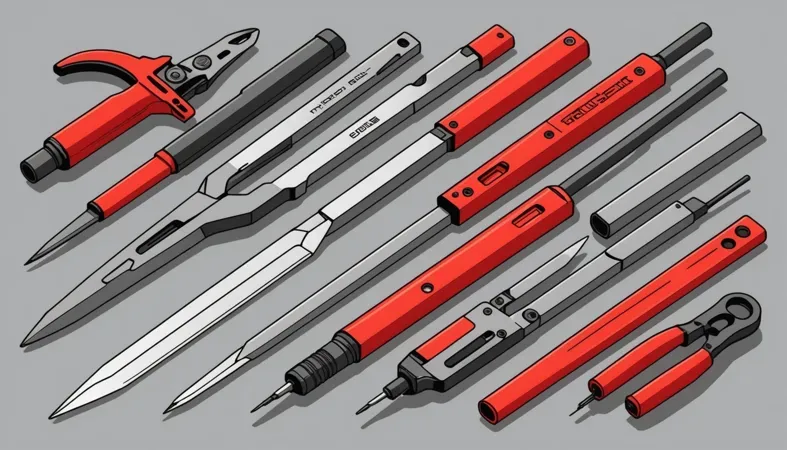
Factors Influencing Aerospace Welder Skills
What factors affect your path to becoming an aerospace welder?
-
Type Of Materials Used
Aerospace welders work with materials like aluminum, titanium, and stainless steel. Aluminum makes up about 70% of an aircraft’s structure, requiring mastery of techniques specific to this lightweight yet strong metal.
-
Welding Techniques
Techniques like TIG (Tungsten Inert Gas) and MIG (Metal Inert Gas) are crucial. For example, TIG welding is preferred for thinner materials and high-strength applications, essential in aerospace work.
-
Environmental Conditions
Focus on training in controlled settings. Welding often occurs in confined spaces or at high altitudes, which can affect bead integrity and safety protocols.
-
Weld Quality Standards
Aerospace welds must meet strict standards like ASTM and AWS D1.2. Non-conformance can lead to failures, endangering lives and resulting in costly redesigns.
-
Personal Skill Level
Your prior experience significantly affects your learning curve. Mastering basic welding takes 6 to 12 months, but aerospace-specific skills may require additional specialized training.
Common Issues and Troubleshooting
Let’s explore unique challenges faced by aerospace welders.
-
Inconsistent Weld Quality
Aerospace welders often notice inconsistent weld quality. You can identify this through visual inspection. Look for uneven bead profiles or porosity. To resolve this, ensure proper heat inputs—aim for 1.5–2.5 mm per second (0.06–0.1 In/sec).
-
Difficult Material Compatibility
Double-check the materials being welded. Aerospace welders often work with various alloys. Identifying fillet and butt joint parameters is key. Measure tensile strength—ideally 25 ksi (172 Mpa) or more—for optimal results. Use appropriate filler materials. It’s essential to know how to weld 45-degree angles precisely for complex assemblies.
-
Equipment Malfunctions
Aerospace welders experience equipment failures due to thermal limits. Watch for overheating warnings or inconsistent arc stability. Regularly maintain your machines and ensure proper cooling systems are in place.
-
Weld Cracking
Weld cracking can occur when using improper preheating. Identify cracks with non-destructive testing methods. Follow preheat guidelines—typically around 65°C (150°F)—and control cooling rates during weld solidification.
-
Heat-affected Zone Problems
Aerospace welders encounter issues in the heat-affected zone (HAZ). Brittle regions may appear due to improper heat inputs. Regularly analyze HAZ integrity with ultrasonic inspections, and adjust your technique to minimize size and dislocation density.
Aftercare, Inspection, and Advanced Tips for Aerospace Welding
Here’s key guidance on aftercare, inspection, and expert tips for aspiring aerospace welders.
Aftercare Suggestions
After finishing your welds, cool them naturally to ambient temperature (Around 21°C or 70°F). Avoid rapid cooling to prevent warping—this is critical. Additionally, clean any residue with a non-abrasive scrub sponge and a weld cleaning solution, like Clean-Guide, to maintain weld integrity.
Inspection Points
Start inspections with non-destructive testing (NDT), such as dye penetrant testing, to check for micro-cracks. Use acceptable weld fillet sizes, typically between 3 mm and 5 mm (1/8 Inch and 3/16 Inch). I use the Miller Multimatic series during inspections for precise assessments. They’re reliable!
Expert Tips
If you’ve got years of experience, try using thermal imaging cameras during welding to detect hotspots exceeding 260°C (500°F). Sticky transfer mode can minimize defects, targeting a frequency of 400 amps for aluminum. Lastly, improve your skills by focusing on weld finesse at high travel speeds of 12 inches per minute for high-strength joints.
Career Advancement as an Aerospace Welder
Understanding how to advance your career is key in aerospace welding.
Certification Specialization
- AWS Certified Welding Inspector (CWI): This certification requires specific knowledge in quality assurance and welding practices, enhancing your credibility.
- AWS Certified Welder Program: Aimed at individuals seeking a specific AWS qualification in materials. Passing this can boost your career prospects significantly.
- Structural Welding Certification: Gaining certification specifically for structural applications in aerospace can open doors to more complex roles.
Potential Job Titles
| Job Title | Average Salary (USD) | Key Responsibilities |
|---|---|---|
| Aerospace Welding Technician | $55,000 – $75,000 | Welding components for aircraft with precision and quality control. |
| Welding Engineer | $70,000 – $100,000 | Designing welding processes and ensuring they meet industry standards. |
| Quality Assurance Inspector | $60,000 – $80,000 | Inspecting welds for integrity and compliance with safety regulations. |
| Senior Aerospace Welder | $75,000 – $90,000 | Mentoring junior welders and overseeing welding operations. |
Networking Opportunities
- Industry Conferences: Participate in events like the Aerospace Industries Association’s annual conference to meet potential employers.
- Online Forums: Join platforms such as LinkedIn groups related to aerospace welding to connect with industry professionals.
- Trade Schools and Alumni Events: Stay engaged with former classmates and instructors; they can offer job leads or referrals.
Why This is Worth It: Advantages
The benefits of becoming an aerospace welder are significant. It helped my work by deepening my understanding of complex welding techniques for aircraft structures.
You’ll also enjoy a strong job outlook, competitive pay, skill diversity, and opportunities to work with cutting-edge technology. For example, aerospace welders can earn around $60,000 to $70,000 annually in the U.
S. (About €50,000 to €60,000 in Europe), plus bonuses for special projects. Isn’t that enticing? Understanding the intensity of a welding arc is crucial during these specialized tasks and you can explore about how bright a welding arc can be.
Where is Aerospace Welding Used?
I’ve met many aerospace welders working wonders on aircraft, but there are plenty of other impressive applications, such as:
- Spaceframes: Used in spacecraft structures, aerospace welders join lightweight alloys to withstand harsh conditions. Titanium is particularly popular due to its strength-to-weight ratio.
- Engine Components: Welders create crucial engine parts like combustors and turbine cases, primarily using Inconel for its heat resistance.
- Fuel Tanks: Aerospace welders fabricate safe, lightweight fuel tanks using aluminum alloys, which help reduce overall aircraft weight.
- Flight Control Surfaces: Welded components on ailerons and rudders ensure effective maneuverability. They often use aluminum, valued for its strength and low density.
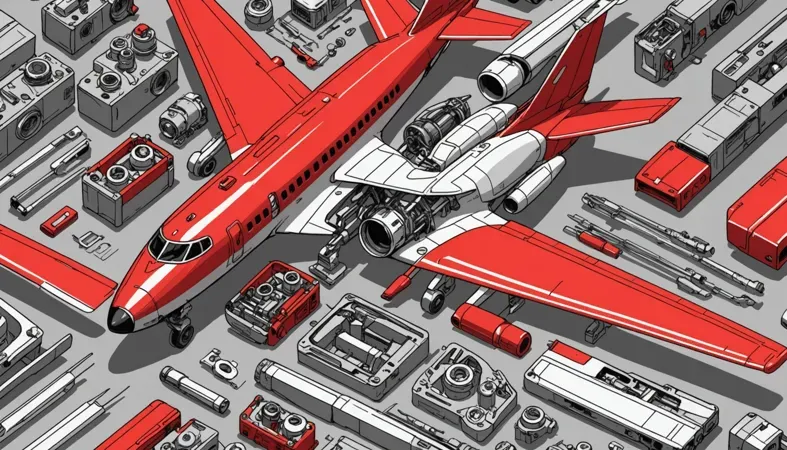
Other Options You Can Consider
You can explore alternatives like online welding courses from platforms such as Coursera or Udemy. These courses are often flexible and can fit your schedule better than traditional education. I’ve learned through hands-on experience that some employers value practical skills over formal certifications, making self-taught methods valid in certain situations.apprenticeships can also provide on-the-job training. Organizations like the National Center for Construction Education and Research (NCCER) offer programs that get you working fast. Often, these paths can lead to positions without the costs of formal schooling, paving your way to a successful career.
Frequently Asked Questions (FAQs)
Now let us look at some questions I typically get asked about aerospace welding.
How Much Does an Aerospace Welder Make?
How much does an aerospace welder make? An aerospace welder typically earns between $40,000 and $85,000 per year. The salary can vary based on experience, location, and employer, with some welders in top positions making over $100,000 annually. Although the work is rewarding, welders must also be aware of safety measures such as protecting their skin from high-intensity light, which raises an important question: can you get sunburn from welding?
Are Aerospace Welders in Demand?
Are aerospace welders in demand? Yes, aerospace welders are in demand. According to the Bureau of Labor Statistics, the job outlook for welders, including those in aerospace, is expected to grow by 3% from 2021 to 2031, adding about 12,000 jobs.
Is Aerospace Welding Hard?
Is aerospace welding hard? Yes, aerospace welding can be challenging. It requires precision and attention to detail, as welds must meet strict safety and strength standards. The complexities of different materials used in aerospace can also add to the difficulty.
How Long Does It Take to Become an Aerospace Welder?
How long does it take to become an aerospace welder? It usually takes 6 months to 2 years to become an aerospace welder. This includes obtaining a high school diploma, completing welding training programs, and gaining necessary certifications.
What is Aerospace Welding?
What is aerospace welding? Aerospace welding is the process of joining metal components in aircraft and spacecraft. This specialized form of welding is crucial for ensuring structural integrity and performance under extreme conditions, like high altitudes and temperatures.
What is an Aerospace Welder?
What is an aerospace welder? An aerospace welder is a skilled technician who specializes in welding components for the aerospace industry. They work with advanced welding techniques and materials to create safe and durable products for flight.
That brings us to the end of our discussion on becoming an aerospace welder. We covered the definition of an aerospace welder, the different types of aerospace welders, essential steps, various welding processes, skill factors, common troubleshooting issues, and aftercare tips. We even touched on the advantages of this career and explored where aerospace welding is applied.
So, how to become an aerospace welder? You need the right training, including technical skills and knowledge in different welding processes. Consider investing time in the mentioned steps, including practice and safety measures. If you’re looking for more personal guidance in this field, contact me if you’d like more insight into aerospace welder salaries or tips on enhancing your skills.
For those eager to dive deeper into the world of welding, I encourage you to visit What is Welding for additional resources and information.
References
- American Society of Mechanical Engineers. (2019). ASME Section IX: Welding and Brazing Qualifications. New York, NY: ASME.
- American Society of Mechanical Engineers. (2019). ASME Section IX: Welding and Brazing Qualifications. New York, NY: ASME.
Joe Carter is a retired welding professional with over 40 years of hands-on experience in the industry, spanning ship repair, structural welding, and even underwater projects. Joe is a master of MIG, TIG, and Stick welding. Passionate about mentoring the next generation of welders, Joe now shares his decades of expertise and practical insights to help others build rewarding careers in welding.
Aerospace Welder Skills, Aerospace Welding, American Welding Society, Career Guide, Job Outlook, MIG Welding, Structural Integrity, Welding, Welding Certification, Welding Techniques
